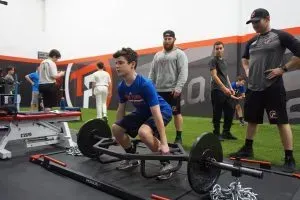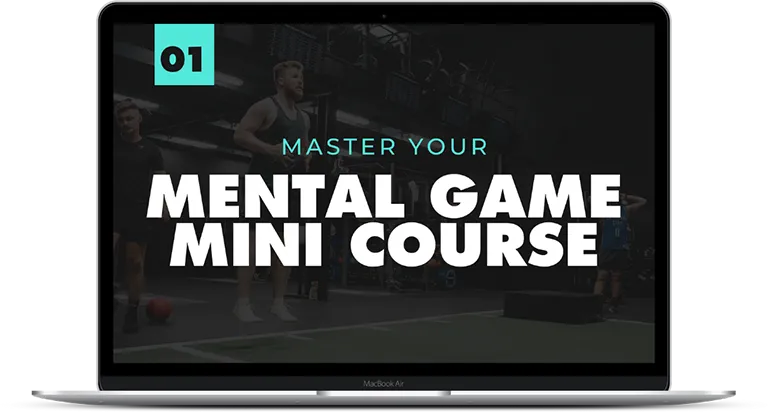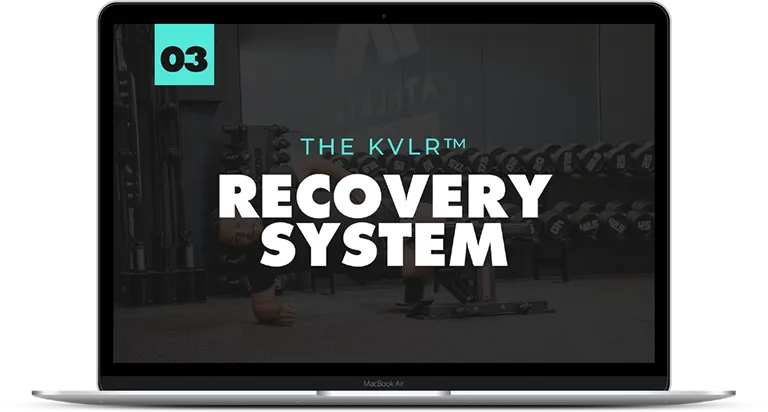Athletes Authority
Latest Blog & Insights

The 5 Key Components to Develop a Sport-Specific Strength Program
What You Need To Know As A Coach & Athlete
As a coach, you make your money on your ability to improve the general qualities of an athlete so they perform better at their sport.
You know that over the course of a training intervention, weight on the bar needs to increase. You know their quality of movement needs to improve. You know their confidence needs to lift.
If you get those things right – performance improves and injury risk goes down.
It’d stand to reason that if you want to be a strength coach, that mastery of programming is your first priority. However, the most common question I’m asked as a strength coach by other aspiring coaches is this:
“How do you train your athletes, and what does your periodization look like?”
Since identifying myself as a strength coach in the last three years, I’ve come to find that a lot of Personal Trainers haven’t yet fully grasped the most important elements of athlete development, and development of anyone for that matter. Because education is a high value of mine, I wanted to share with you what I feel are the 5 most important elements to developing a sport specific strength program. This should form a framework for which you could apply to any athlete or sporting endeavour.
1) Periodisation
Periodisation in sports is the planning of athletic training in a progressive, cyclical fashion with the goal of timing performance during the athlete’s major competitive events.
For individual athletes in track and field, tennis, swimming, running or cycling, competition usually occurs sporadically, making this goal a little more linear and easier to accomplish.
For team sport athletes who compete in long seasons, you need a slightly more systematic approach to keep the coaches and athletes organised, interested and engaged.
The basis for periodization stems from a physiological basis known as GAS, or General Adaptation Syndrome.
This involves three phases: 1) An initial shock of a new stimulus, 2) learned adaptation to the stimulus, and 3) exhaustion.
For progress to begin and continue, the athlete needs to receive a stimulus that the body is not yet conditioned to handle, otherwise known as the alarm stage of initial shock.
The body then positively adapts to this stimulus, and in a perfect world, this cycle would continue.
However, we commonly see athletes go the other way – they train too hard, don’t get enough rest which is compounded by work and study commitments and they enter the exhaustion stage – performance drops, injury risk increases, and feelings of wellbeing and satisfaction plummet – not ideal by any means.
As a strength coach, it’s important to play on the edge, in some cases overreaching the athlete in a controlled, organised manner may be beneficial, and we see this in practice during intensive training camps. However, these camps should be proceeded with adequate rest and recovery.
The best strength coaches employ wellness strategies to assess feelings of wellbeing, and they track training loads to ensure that the athlete is continuing to respond positively to training stimuli.
We use Teambuildr for our athlete tracking, and we highly recommend it for other strength coaches looking to sharpen their game.
2) Progression
If you have a bag of candy, and you give your athlete all the candy at once, you’ll not only lack candy for a later time, but they are going to expect more and more from you every time.
Keep it simple.
Progress movement patterns by systematically increases resistance. Vary the exercise approximately every four weeks to avoid stagnation. You can either increase the complexity of the exercise, or lateralise the exercise in a novel way. Eg, you can add complexity to the Barbell Squat by adding kettlebells, attached to bands at the ends of the bar, or lateralise the Barbell Squat to a more specific joint angle that replicates a demand of the sport. We have some examples on how we do this here.
By having a step ladder approach, training enables athletes to learn and master new movement patterns, harness their new found strength and continue to challenge themselves with more complex or challenging exercises (don’t forget, you need to keep providing your athletes with a novel stimulus to keep them adapting).
If you ever need to refresh your memory on how to progress, remember these four things:
Volume
Intensity
Complexity
Lateralise
3) Individualisation
Within a single sport, each athlete will have different strength and movement goals, depending on position, their specific event, and their current movement capabilities.
Strength training can, and should be tailored to individual athlete needs. Within the sport of track and field, sprinting athletes would use much more resistance and focus more on powerlifting set and rep schemes, whereas endurance athletes might adopt lower resistance, higher repetition exercises to better simulate the endurance demands.
The best coaches recognise the individual differences between player positions and create truly effective strength programs for their athletes.
4) Athlete Autonomy
You’re the boss and you’re the expert. That isn’t to say that for some athletes who are in tune with their bodies, and have a solid foundation of gym training, that their opinion doesn’t matter, too.
Some of the best relationships I have with my athletes are the ones where we get to collaborate – it’ll be rewarding for the both of you.
I ask questions like:
‘What do you feel are your strengths at the moment, and what your weaknesses?’
‘If you had 15 minutes of training to do what you wanted to do, what would it be?’
As a coach, you can guage player satisfaction exceptionally well with an approach like this, and ensure they feel like they have some control and autonomy on their training process.
5) Program Customisation for different Athletes
Depending on the time of season (aka periodization), some exercises are beneficial for all athletes, while some exercises may not be.
For that reason, we don’t write strength programs for rugby players the same way we do for tennis players, swimmers, or track and field. Each of these sports demand strength to be displayed differently; they need a different level of muscle mass; speed demands differ, and so do energy system requirements.
We take this into account by tailoring workouts to the movement patterns and energy demands of each sport.
At Athletes Authority, we have built out programs for our coaches to fit with an athletes training plan. For example, striking and throwing athletes (think baseball, tennis, golf and cricket) should be focused on rotational core strength to maximise their power output during their throw or strike, whereas rugby players require high levels of shoulder and hip stability and strength to protect and maximise the efficiency of the joint during exposure to high force and degrees of rotation during gameplay.
Using these 5 key components, you should be able to build out an elite level strength program. For those that want more help, you can contact us at [email protected] for more tips on getting your strength programming kicking goals for you.
Are you hungry for a competitive edge? Unlock a new level of athleticism Click here to learn more
Our resources

Master your mental game Mini Course
Discover the mindset strategies of the World’s Greatest Athletes so you can turn your mind into a weapon of performance.

THE ATHLETES AUTHORITY RECOVERY SYSTEM
Performance = fitness – fatigue. Reduce your fatigue and recover faster with our 3-step recovery system.
SYDNEY LOCATION
© 2023, Athletes Authority | All Rights Reserved
Website & Marketing Powered By Gymini

